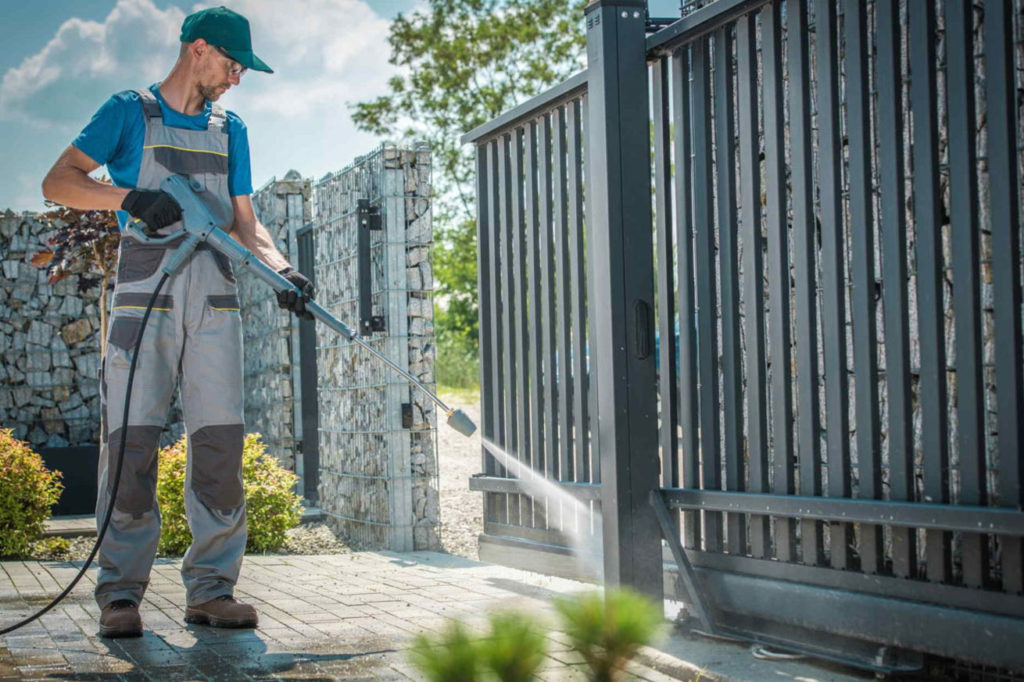With the arrival of bad weather, the automatic gate may need a little extra maintenance. Here’s the advice from VDS Automazioni experts.
Doing maintenance and taking care of the sliding gate means guaranteeing durability and functionality for many years. Particularly during the rainy seasons and in autumn, the small maintenance of the automatic gate must be constant in order to guarantee full functionality to all the mechanisms that make the machine move.
Leaves, mud, stagnant water and accumulations of dirt of different kind, could in fact block the run or even cause more important damage. In this article we explain what you need to do to ensure a long life for the gate.
Mandatory review once a year.
In Italy there is an obligation to maintain automatic gates. They are machines in motion and it is very important to preserve not only functionality but also and above all safety.
Speaking of maintenance, the law provides for annual systems monitoring that must be done by an installer or a specialized and qualified technician. A user and maintenance booklet is issued for the automatic gate at the time of installation (together with the certificate of conformity) on which all the annual reviews are then noted.
The manufacturer of the gate will be responsible for the maintenance of the automatic gate by carrying out an inspection, checking the gate and proceeding with the compliance of the sections that require intervention.
During these mandatory check-ups the following components are checked:
- hinges that are stabilized and lubricated
- the actuators, which are inspected and cleaned to prevent wear, rust or dirt
- brackets and pistons
- The motor as a whole, which must be stable in its original seat
VDS Automazioni is able to provide its customers with complete and professional assistance.
Cleaning the automatic gate
The automatic gate is a relatively complex machine which, in order to function correctly and safely, must be cleaned and lubricated from time to time.
Speaking of cleaning, we remind you that it is important to check:
Cleaning the track and the limit switch
The track must be free of dirt, stones, snow, leaves and mud.
In the worst case, an obstacle could cause the sliding block. At the same time it’s possible that dirt accumulates in the limit switch, dragged by the gate itself. Also in this case it is important to intervene as soon as possible because a blockage of the stroke could severely damage the engine.
Parts lubrication
Rack, pinion, guide olives and limit switch spring (if any) must always be kept lubricated. In this regard, we remind you to ask your installer for advice regarding the products to be used.
The lubricants must be chosen carefully, taking into consideration the environmental conditions in which the machine operates. For example, if the gate is mounted on a brecciated driveway, we strongly advise to not use a creamy grease because it tends to capture a lot of dust (and not only) and create a too dense concoction that would knead the pinion preventing the rack from sliding fluidly: damage instead of an improvement!
Your installer can give you the best advice! If in doubt, contact VDS.
A look at the photocells and flashing lights
The photocells are a fundamental component for the safety and operation of the gate: they guarantee immediate blocking in the event of crossing during the stroke, limiting accidents. They work with an infrared transmission from one photocell to the other which is exactly opposite.
For this reason, it’s easy to understand that the photocells must be kept clean and it’s therefore important to check them often because insects, small animals (such as geckos or lizards), vegetation or even simply dust and encrustations, could limit their effectiveness and operation.
If, despite cleaning, the problems persist, it’s good to do more in-depth checks by contacting your trusted installer.
As for the flashing lights, remember that they are an indispensable safety device: they must be functional and above all clearly visible: free them from leaves and branches, from dirt and water stagnation that could affect their functions.
Even if it sounds simple, don’t do it yourself
Last advice, but not least: never tamper with the motor or the electrical parts even if your goal is only to clean. If you are not a specialized installer, you must avoid opening the most delicate and sensitive (and expensive) parts of your automation.
Disassembling even just the protective plastic panel to “see what happens inside” could compromise the protection of the gearmotor and favor accumulations of dust and dirt which inevitably compromise the proper functioning of the machine.

